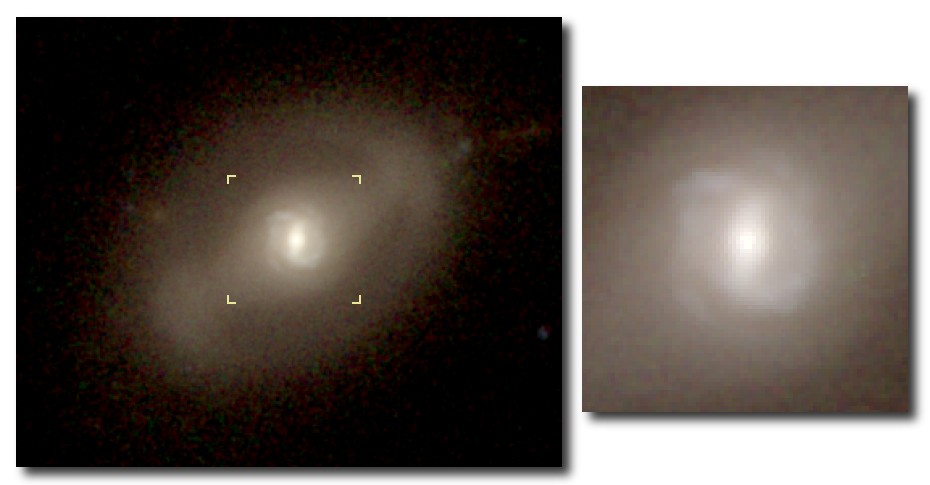A Bar Within a Bar

Credit & Copyright:
Thorsten Lisker
(U. Basel),
Victor P. Debattista
(U. Washington),
Ignacio Ferreras
(KCL),
Peter Erwin
(MPE),
STScI
Explanation:
More than half of all spiral galaxies have a bar in
their center. Amongst the better known barred galaxies are
M83,
NGC 1300,
NGC 1365
and our own
Milky Way Galaxy.
Because bars are not
always present, Hubble needed a
tuning fork
to classify galaxies.
Some galaxies may even have two bars, a large scale bar and a smaller
nuclear bar, and are then referred to as double-barred. Nuclear bars
have been known since the 1970s, but only with
HST
has it been
possible to search for them systematically because of their small
sizes. As a result, we now know that about one third of barred
galaxies host a nuclear bar inside their main bar. Nuclear bars have been thought to
be one way in which gas can be funneled down to the centers of
galaxies to feed the monster black holes lurking there. This
double-barred galaxy,
GOODS
J033230.93-273923.7, was
discovered
by us using the wealth of data collected by the
Hubble Space Telescope's Advanced
Camera for Surveys.
It is the furthest known example of a double-barred galaxy, at a
distance of 2.3 billion light years.
The
nuclear bar, which is 5000 light years across, is surrounded by small
spiral arms and embedded within the main bar, which is 46,000 light
years from end to end.
This galaxy and a
similar object
found at a somewhat lower distance demonstrate once
again the capabilities of
HST.